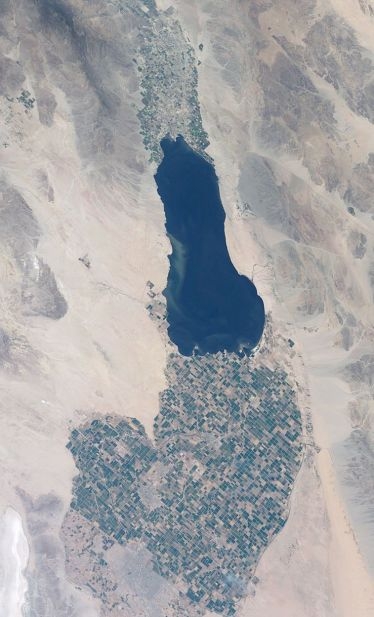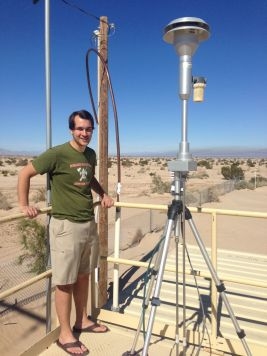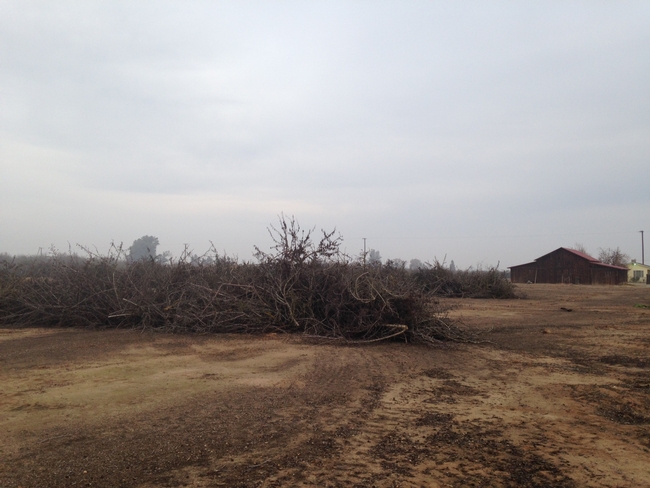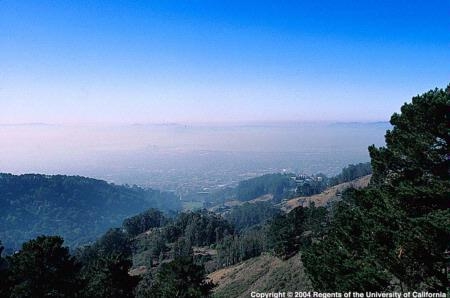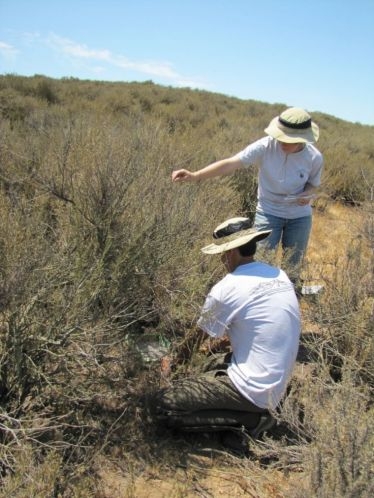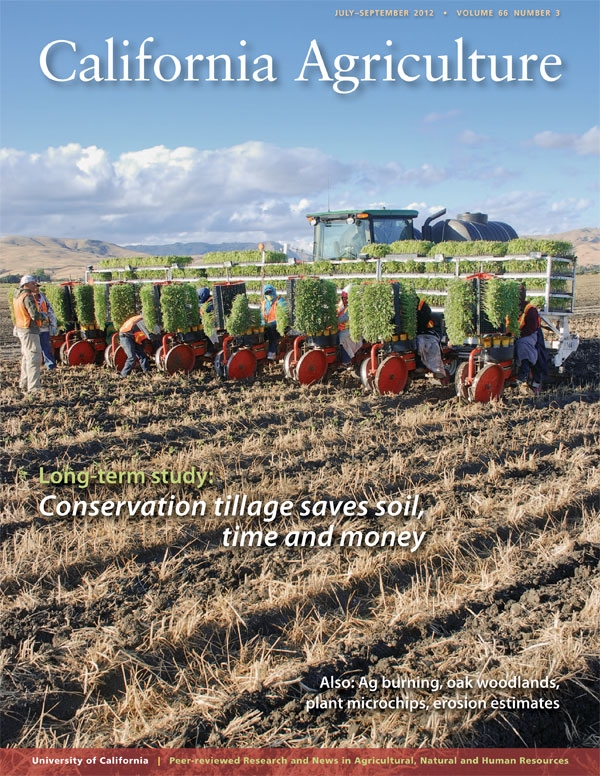Posts Tagged: air
New dust sources resulting from a shrinking Salton Sea have negative ecological and health impacts
UC Riverside study shows soils once submerged under the sea and airborne particulate matter are high in sodium and selenium
Scientists at UC Riverside investigating the composition of particulate matter (PM) and its sources at the Salton Sea have found that this shrinking lake in Southern California is exposing large areas of dry lakebed, called playa, that are acting as new dust sources with the potential to impact human health.
“Playas have a high potential to act as dust sources because playa surfaces often lack vegetation,” said Roya Bahreini, an associate professor of environmental sciences, who led the research project. “Dust emissions from playas increase airborne PM mass, which has been linked to cardiovascular disease, respiratory disease, and mortality.”
Study results appeared recently in Environmental Science and Technology.
Bahreini's team set out to test whether emissions from playas change the composition of PM10 (particulate matter with diameters up to 10 microns) near the Salton Sea. The team assessed the composition of playa soils (recently submerged underneath the Salton Sea), desert soils (located farther from the sea), and PM10 collected during August 2015 and February 2016.
They found that dust sources contributed to about 45 percent of PM10 at the Salton Sea during the sampling period while playa emissions contributed to about 10 percent. Further, they found that playa emissions significantly increased the sodium content of PM10.
“Increase in the sodium content of PM10 can affect the ecosystem when the sodium-rich particles deposit downwind and change the natural balance for soils and agricultural lands or when these particles form clouds,” Bahreini said. “Currently, the primary concern for PM emissions from playa is the contribution to total concentration of PM10, which regardless of composition, is an irritant and can have negative respiratory effects.”
Her team also found that playa soils and PM10 are significantly enriched in selenium relative to desert soils.
Bahreini explained that selenium can be a driver of aquatic and avian toxicity. “Additionally, higher selenium enrichments in PM10 during summertime suggest that selenium volatilization from the playa may become an important factor controlling the selenium budget in the area as more playa gets exposed,” she said.
Alexander L. Frie, a graduate student in environmental sciences and the first author of the research paper, urges that the Salton Sea be paid close attention since, although it is widely considered a large ecological disaster, with no serious monitoring and remediation efforts the sea may also create a human health crisis for the surrounding area.
Samantha C. Ying, an assistant professor of environmental sciences and a coauthor on the paper, stresses that monitoring the increase in dust sources over time is necessary to quantify its contribution to local health problems.
“Our study shows that the shrinking Salton Sea is contributing to dust sources in the region,” she said. “Even considering just the small area of playa that is exposed now, the contributions are significant.”
Another concern the researchers point out is that water that is currently diverted from the Colorado River and directed into the Salton Sea is scheduled to end before 2018. The resultant decrease of inflow into the sea will likely cause a decline in water level, exposing more playa, and therefore emitting more dust.
“With more playa being exposed, we expect total PM10 concentrations to increase and human exposure to these particles in downwind areas will also increase,” Bahreini said. “Therefore implementing any project, for example, creating shallow water pools over the playa, that limits formation of salt crusts on the playa will be valuable.”
Bahreini, Frie and Ying were joined in the study by Justin H. Dingle, a graduate student in Bahreini's lab.
The study was funded by UCR Regents' Faculty Development Award, USDA National Institute of Food and Agriculture, a UCR Provost Research Fellowship, the U.S. Geological Survey and ANR's California Institute for Water Resources.
Read more:
KPBS, David Wagner New Study Traces Airborne Dust Back to Shrinking Salton Sea
The Desert Sun, Ian James Studying dust around the Salton Sea, scientists find initial answers
Palm Desert Patch The Hidden, Potentially Deadly, Dangers of The Salton Sea
UC scientist studies an alternative to burning old trees when replacing an orchard
Holtz has been pioneer in ag burn alternatives throughout his 26-year-career with UCCE, and going back still further on his family almond farm near Modesto. Beginning in the early 1990s, Holtz and his father experimented with chipping almond prunings instead of burning them, long before air quality regulations required wide implementation of the practice.
When Holtz heard a four-acre stone fruit orchard was slated for removal at the UC Kearney Agricultural Research and Extension Center in Parlier seven years ago, he took the opportunity to study the impact of grinding up and incorporating the whole trees before planting a new orchard.
“When an orchard is pushed out, there is about 100 tons per acre of organic matter that is taken out of the system,” Holtz said. “My previous research showed positive results from organic matter. Our San Joaquin Valley soils are typically critically low in organic matter. Why remove it if it is good for the soil?”
A local company was contracted to grind up and incorporate the trees using an Iron Wolf, essentially a 50-ton rototiller, in selected research plots. (See video below.) At first, Holtz was concerned that the Iron Wolf left “firewood-sized” chucks of wood in the plots, pieces much larger than he had studied before in his wood chipping research. But the worry turned out to be unfounded.
In comparison plots, trees were pushed together and burned. The ashes later were spread out on the soil. All the plots were fertilized at the normal rate.
Over the years, Holtz has compared laboratory analyses of the nutrients available to the trees in the soil and nutrients in the leaves. Initially, the burn treatments had more nutrients available. The second year, nutrient availability was about equal. Leaf analyses in the third year began to show a higher level of nutrients in the leaves of trees growing in the area where old trees had been ground up and incorporated. In the fifth and sixth years, Holtz didn't see any differences in growth, but data suggests slightly higher yields where the trees were ground up.
“A lot of growers feared if we added that much carbon to the soil, the microbes breaking down the organic matter would tie up nitrogen and the trees would be stunted,” Holtz said. “But the research results suggest that the trees will do just as well or better in the presence of the additional organic matter.”
One potential barrier to grinding up old trees is the cost. Holtz said the Iron Wolf treatment cost $800 per acre and it is not readily available in the San Joaquin Valley. Burning is nearly cost-free for the farmer, but contributes to air pollution and is highly regulated.
Another option for almond farmers preparing to remove an orchard and replant is employing a large tub grinder, which leaves much finer particles of wood than the Iron Wolf, is more readily available but more expensive. Holtz said he hopes that growers in the future will receive incentives to grind up their orchards and incorporate the wood chips into their soils before they plant a second- or third-generation orchard.
“I'm trying to find growers who would be interested in trying this approach to conduct on-farm research,” Holtz said.
In the video below, the Iron Wolf grinds up whole trees and incorporates the organic matter into the soil:
An initiative to enhance competitive and sustainable food systems is part of the UC Division of Agriculture and Natural Resources Strategic Vision 2025.
International symposium will explore air pollution’s effect on plants
Air pollution is harmful to the health of people and animals. That much we know, but how does air pollution affect plants?
Scientists from 25 countries will gather on the Monterey Peninsula to discuss “Plants and the Changing Environment” in June. The 9th Air Pollution and Global Change Symposium will be held June 8-12 at the Asilomar Conference Center in Pacific Grove.
The goal of the series is to consider interactions of air pollution and global change and their impacts on vegetation.
“The symposium is unique in dealing with effects at all levels from molecular and cellular mechanisms, whole plant and crop impacts, all the way up to models of ecosystem and regional impacts,” said David A. Grantz, UC Cooperative Extension specialist based in the Department of Botany & Plant Sciences at UC Riverside.
The symposia are held every few years in different countries, the last in Groningen, The Netherlands, in 2011. The event in California is being organized by Grantz and Kent O. Burkey, USDA/ARS plant physiologist and North Carolina State University professor of crop science and botany in Raleigh.
UC scientists and students engaged in research on the interactions of plant function, metabolism and communities with environmental pollution and global change are encouraged to attend.
“This is an important opportunity for U.S. scientists because the last time this symposium was held in the U.S. was in 1992,” said Grantz. “This is a great chance to catch up on the physiological ecology and modeling efforts underway in Europe and Asia.”
The confirmed keynote speakers include
- Dennis Baldocchi, University of California, Berkeley, USA
- Lisa Emberson, Stockholm Environment Institute and University of York, U.K.
- Lisa Ainsworth, USDA/ARS and University of Illinois, USA
- Koike Takayoshi, Hokkaido University, Japan
- Harry Harmens, Centre for Ecology and Hydrology, Environment Centre Wales, U.K.
- Allen Lefohn, ASL and Associates, USA
- Atul Jain, University of Illinois, USA
- Rainer Matyssek, Technische Universitat Munchen, Germany
The deadline for abstracts, registration and lodging is March 31. The agenda, registration and housing information can be found at WWW.APGC.EU.
Study suggests air pollution is harming native plants, increasing fire risk in Santa Monica Mountains
The researchers measured atmospheric nitrogen deposition levels at ten sites throughout the Santa Monica Mountains and found significantly higher pollution levels in the eastern end, closer to Los Angeles.
Generally attributed to vehicle emissions in the Santa Monica Mountains, nitrogen deposition is the air pollution from industry, agriculture and transportation that settles out of the atmosphere and onto the earth’s surface.
The study is helping the scientists better understand how high nitrogen levels affect native vegetation and what that might mean for fire risk in such a fire-prone region.
“Invasive annual grasses from the Mediterranean have a greater growth response to nitrogen than most native species, and are crowding out native plants,” says Edith Allen, a professor of plant ecology and Cooperative Extension specialist at UC Riverside, and the principal investigator for the study. “Grasses also produce fine, flashy fuels that cause more frequent and larger fires, promoting vegetation-type conversion from native shrubland to exotic annual grassland.”
The preliminary results are from the first year of a three-year study undertaken by Allen, Irina Irvine, a restoration ecologist for Santa Monica Mountains National Recreation Area, and Andrzej Bytnerowicz and Mark Fenn of the U.S. Forest Service.
At the two sites with the best air quality, the researchers added various levels of nitrogen fertilizer into experimental plots of coastal sage scrub to simulate pollution levels found throughout the mountains. They found that the higher levels of nitrogen led to a decline in native shrub seedlings and an increase in nonnative grasses.
Other studies in Australia and California have demonstrated a link between nonnative grasses, also known as “flashy fuels,” and larger and more frequent wildfires.
“The recent fire of May 2013 burned our research plots, but provides an opportunity to learn how invasive grasses compete with native seedlings establishing post fire under nitrogen deposition,” Allen said. “The data will enable us to determine critical loads of nitrogen deposition to help set clean air regulations to protect native ecosystems.”
Coastal sage scrub once covered much of coastal California and is now an endangered habitat type, primarily due to development.
Funded by the National Park Service’s Air Resources Division, the $100,000 study will help the scientists better determine the “critical load” when vegetation shifts, causing alterations to the structure and functionality of ecosystems.
For more information, please visit: http://ucrtoday.ucr.edu/20098
Long-term study: Conservation tillage saves oil, soil and toil in cotton
A 12-year study published in the July-September 2012 issue of the University of California’s California Agriculture journal demonstrates that cotton grown in rotation with tomatoes — using lower-impact conservation tillage — can achieve yields similar to standard cultivation methods and at lower cost.
Conservation tillage seeks to reduce the number of times that tractors cross the field, in order to protect the soil from erosion and compaction, and save time, fuel and labor costs. Cotton crops are planted directly into stubble from the previous crop in the rotation.
In the study, conducted from 2000 to 2011 at the UC West Side Research and Extension Center in Five Points (southwest of Fresno), the number of tractor passes for a cotton-tomato rotation grown with a cover crop was reduced from 20 in the standard treatment to 13 with conservation tillage.
By the final years of the in the San Joaquin Valley study, cotton lint yields were statistically equivalent and even higher (in 2011) than with standard cultivation methods.
“The UC studies have consistently shown that conservation tillage can yield as well as standard tillage in a cotton-tomato rotation,” lead author Jeffrey P. Mitchell, UC Cooperative Extension specialist in the Department of Plant Sciences at UC Davis, and co-authors wrote in California Agriculture journal.
Their study, “Conservation tillage systems for cotton advance in the San Joaquin Valley,” as well as the entire July-September 2012 issue of California Agriculture journal, can be viewed and downloaded online at: http://californiaagriculture.ucanr.edu.
Mitchell is a founder of Conservation Agriculture Systems Innovation (CASI), a diverse group of more than 1,800 farmers, industry representatives, UC and other university faculty, and members of the Natural Resources Conservation Service and other public agencies (http://ucanr.edu/CASI). CASI defines conservation tillage as a suite of cultivation practices — including no-tillage, minimum tillage, ridge tillage and strip tillage — that reduce the volume of soil disturbed and preserve crop residues in the field. Conservation tillage is common in other regions of the United States and parts of the world and is beginning to gain acceptance in California agriculture.
Technological upgrades to tillage implements have been critical to the advancement of conservation tillage systems. These include equipment that can target operations to just the plant row rather than the whole field as well as accomplish several operations at the same time.
Fuel use was reduced by 12 gallons and labor by 2 hours per acre in the conservation tillage plots. This amounted to savings of about $70 per acre in 2011 dollars.
Mitchell noted that more research is needed on the adequate development of cotton stands and the prevention of soil compaction under different conditions, but that the benefits of conservation tillage are becoming increasingly obvious. “Provided that yield performance or more importantly bottom-line profitability can be maintained and the risks associated with adopting a new tillage system are deemed reasonable, conservation tillage systems may become increasingly attractive to producers and more common in San Joaquin Valley cotton-growing areas.”
Also in the July-September 2012 issue of California Agriculture:
Agricultural burning and air quality: Southern California farmers in Imperial County regularly burn crop residues of bermudagrass in the winter and wheat stubble in the summer. A study of ambient air quality adjacent to and downwind of agricultural burning sites in the desert county found that particulate matter levels (PM2.5) were 23% higher on burn days than on no-burn days at four locations. Researchers from the California Department of Public Health also assessed community educational needs regarding agricultural burning and developed fact sheets in English and Spanish targeting the general public, schools and farmers.
The value of privately owned oak woodlands: More than 80 percent of California’s 5 million oak woodland acres are privately owned. In a survey, researchers from Spain and UC Berkeley asked private owners of California oak woodlands to place a monetary value on amenities from their land such as recreation, scenic beauty or a rural lifestyle. The technique, called “contingent valuation,” found that landowners would be willing to pay $54 per acre annually for private amenities from their land and that their willingness to pay per acre decreased as their property size increased.
Microchips for woody plants: Radio-frequency identification (RFID) tags are widely used to track books in libraries, products during manufacturing, cattle from rangeland to the slaughterhouse, inventory in retail, runners in road races and much more. These tiny microchips (often the size of a grain of rice) are now being placed in woody plants such as grapevines and orchards to monitor crop diseases, track irrigation and pesticide applications, and help prevent the theft of valuable plants. In this review, Italian researchers discuss the emerging uses of RFID technology in agriculture.
Rainfall simulators to measure erosion: In their efforts to keep Lake Tahoe clear, researchers have been studying the movement of sediments into the lake using rainfall simulators. These fairly simple machines are placed on a slope; “rain” is created over a small frame, which allows sediment in the runoff to be collected and measured. However, the lack of standardization in erosion studies using rainfall simulators may be hampering progress. Mark Grismer, professor in the Department of Land, Air and Water Resources at UC Davis, makes the case for standardized field methodologies and data analysis.
###
California Agriculture is the University of California’s peer-reviewed journal of research in agricultural, natural and human resources. For a free subscription, go to: http://californiaagriculture.ucanr.edu, or write to calag@ucanr.edu.
WRITERS/EDITORS: To request a hard copy of the journal, e-mail jlbyron@ucanr.edu.

